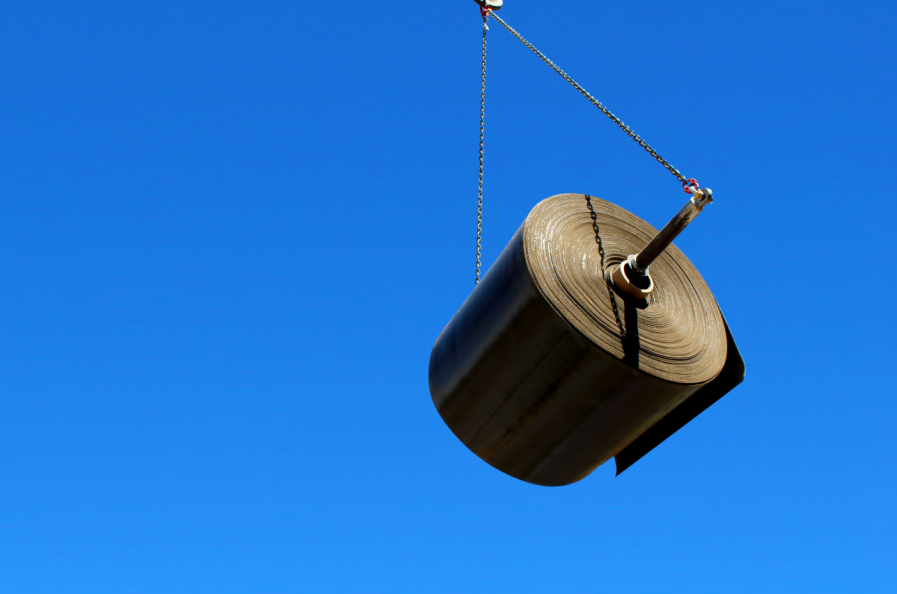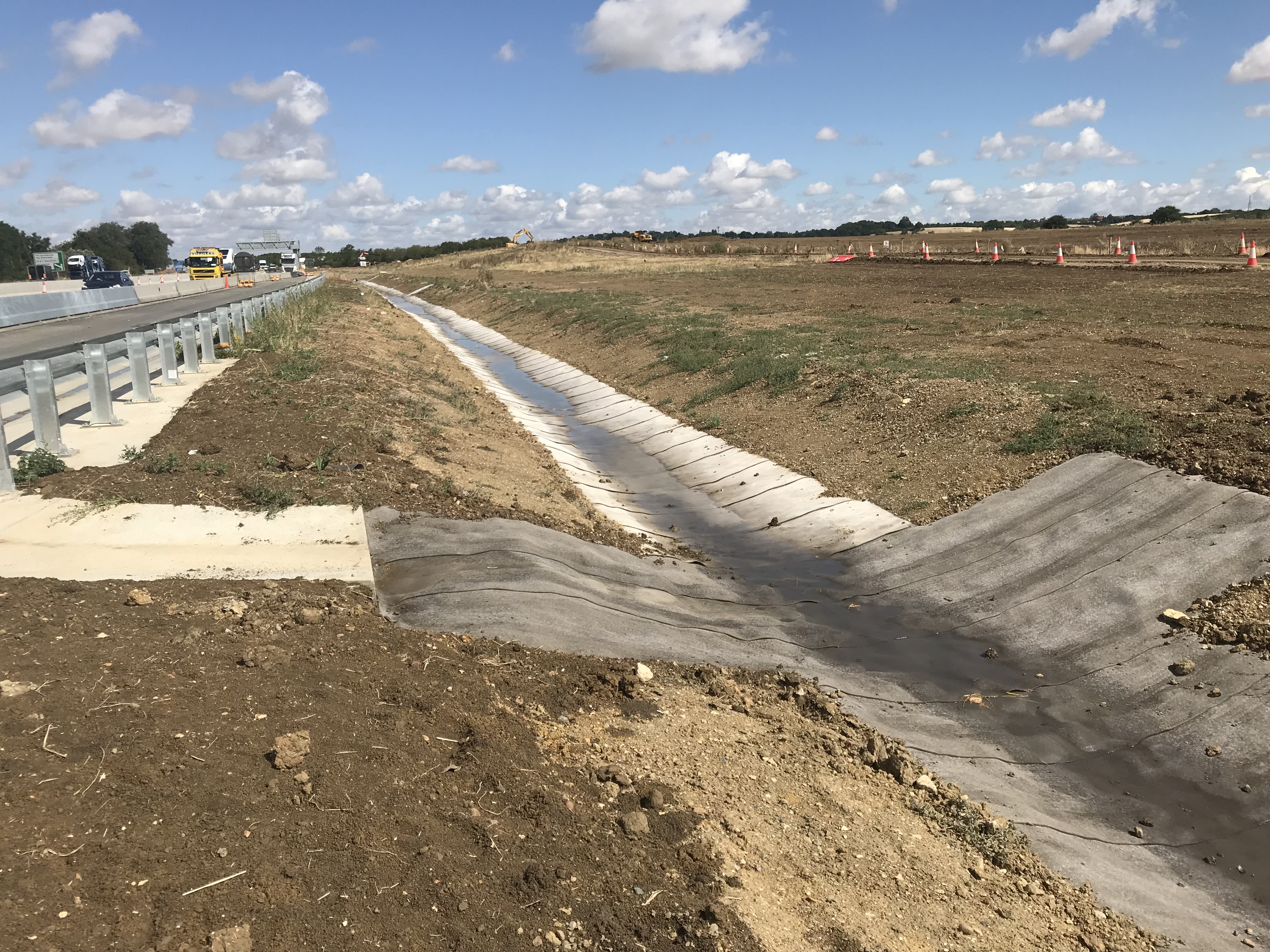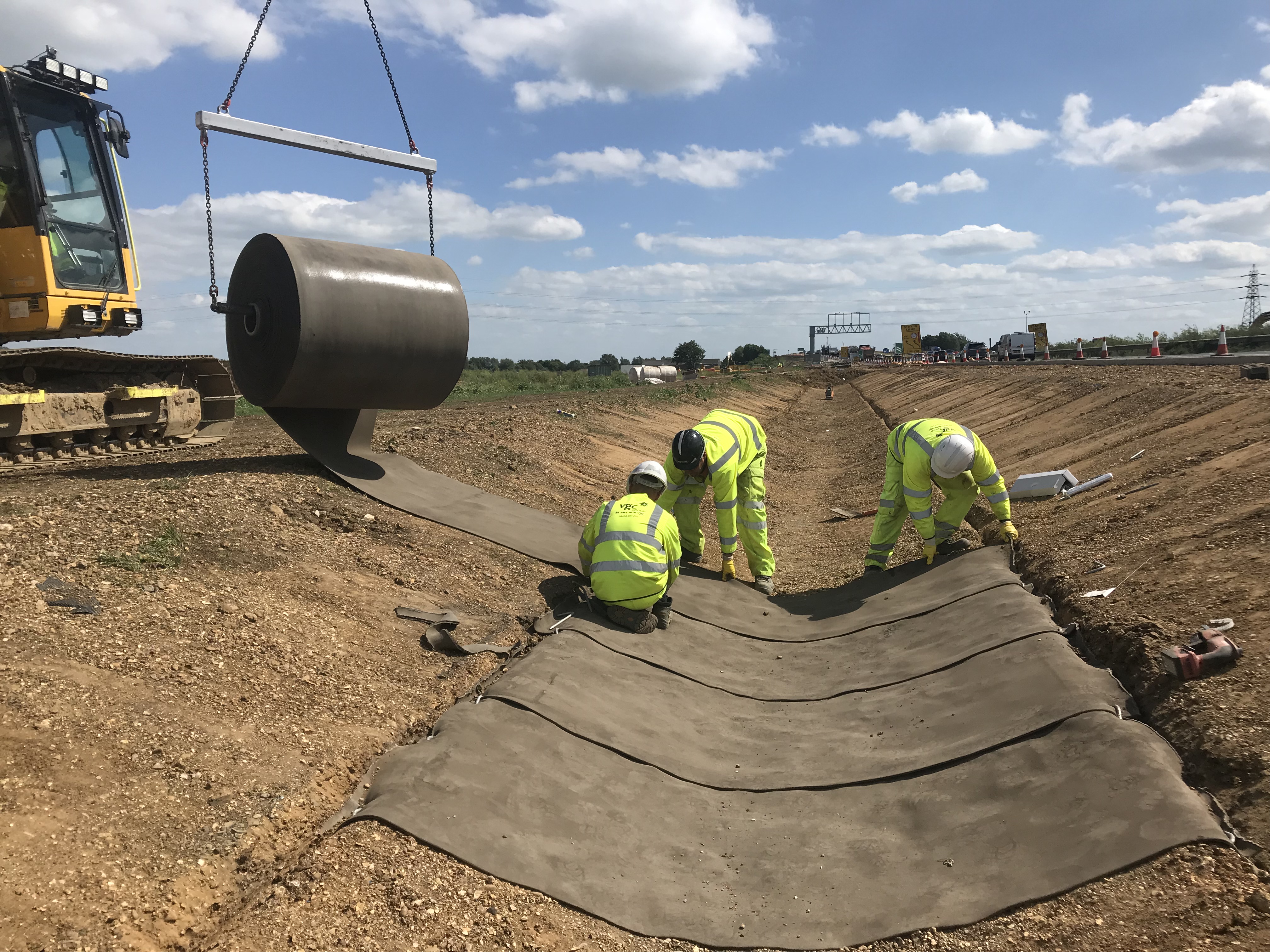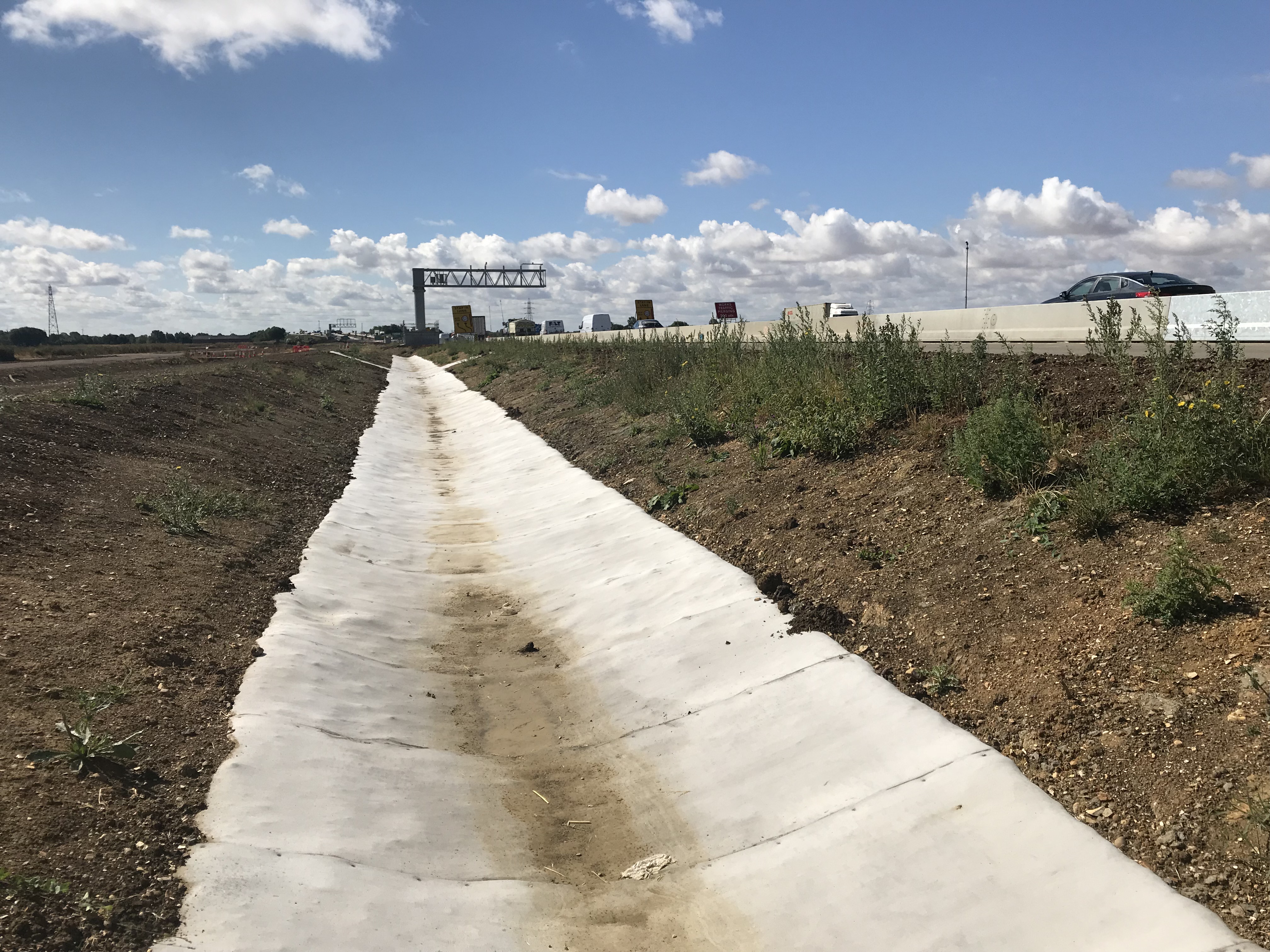
If you drive down busy roads in the UK, you often see a channel running alongside. These channels are designed to collect water which runs off the roads to improve the safety of drivers while travelling. During storms, these channels can provide vital drainage assistance to the roads and can reduce the volume of standing water on the road surface.
Slipform drains run parallel to the road which then feeds into the channels set lower down. Depending on the size of the roads, these channels are sometimes lined with concrete. The concrete is there to prevent the water from the roads being absorbed into the soil, which could cause erosion issues in the future and potentially lead to undermining of the road. In turn, this can result in failure and damage of the road surface.

In the past, the material used for these channels has been traditional poured concrete, mixed on-site and installed. For the project on the A14 road from Cambridge to Huntingdon, however, an innovative, newer form of channel lining was used.
Concrete Canvas® (CC) – known as concrete on a roll – was chosen, and the advantages compared to traditional concrete were evident throughout the project. Due to its design, CC is significantly more environmentally friendly than conventional concrete, and the UK Environment Agency recognises it as an eco-friendly concrete alternative. Delivered to site ready to install, the rolls of fabric contain a specially formulated dry concrete mix which is activated by adding water. The concrete mix then hardens to produce the finished, durable concrete layer.
Traditional concrete requires far more mass than CC to cover the same area. As a result, 95% less material is used in a CC installation, which results in a low mass, low carbon product. CC can also be installed up to 10x faster than poured concrete.

The environmental benefits continue when taking logistical requirements into account. One pallet of CC (or one bulk roll) is equal to two 17-ton mixer trucks in terms of coverage. The environmental benefits of not running these mixing trucks on site, and the greatly reduced logistical requirements for transporting CC to the site in comparison to mixer trucks, account for further reductions in carbon output for the project.
Concrete Canvas has been used on a number of projects where the Environment Agency has provided consultation or even been the end client. The material’s low alkaline reserve and low washout rate allow the material to be hydrated without the requirement for treatment of the runoff before it reaches local watercourses. The material also has a low carbon footprint, minimising its impact on the environment and making it an ideal solution for projects even on sensitive agricultural sites.
From a design and installation perspective, choosing CC over traditional poured concrete had further benefits for road users. Considering the proximity of the channel to the busy road, having as little disruption to traffic as possible, along with having the workers on site for as little time as possible was critical for cost savings, convenience, and health and safety. CC provided a significantly quicker installation time as well as a straightforward installation due to the ease of installation – the fabric can be cut to size quickly and easily with basic hand tools.

Workers cut a secondary ‘notch’ one-third of the way up the sides in which the edges of the CC could be buried to improve the structural quality of the channel. Once installed, the fabric was screwed and sealed at the joints to provide a secure seal and prevent water seeping between layers. Finally, it was hydrated at the end of the day to activate the curing process.
The whole project was aimed at improving the drainage of the A14 as part of a major improvement scheme, and Concrete Canvas provided a solution which was not only more environmentally friendly but easier and faster to install than traditional concrete.
You may also like
The Benefits of Investing in Eco-Friendly Properties
10 Building Materials That Can Be Reused and Recycled After Demolition
8 Sustainable Innovations that are Shaping the Construction Sector
How Green Buildings Impact Our Psychology [Infographic]
